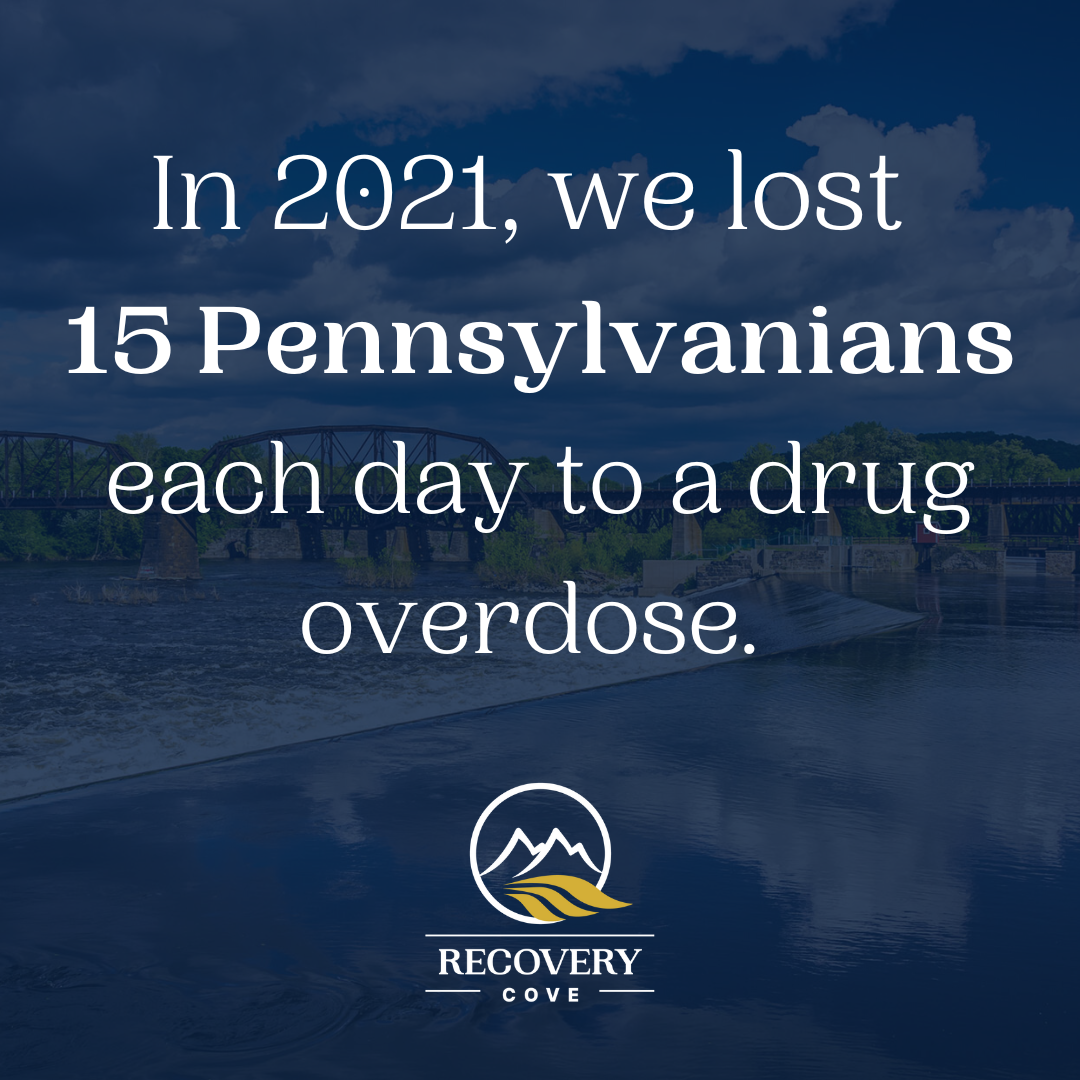As schoolchildren, we all grow up learning to say “no” to drugs. From various cartoon specials to commercial PSAs to video games, school programs, law enforcement task forces and more, the United States has been waging the War on Drugs since 1971. Most of these programs continue to exist to this day.
Unfortunately, despite the efforts of many to keep people away from drugs, rates of both drug use and drug overdose have only continued to climb higher. In the midst of the current crisis, it’s important to take a look at the overdose statistics, why this epidemic is happening, and what we can do to combat it.
How Many Overdoses Happen in the US?
- In the past two decades, the number of drug overdose deaths steadily climbed from under 20,000 in 1999 to 91,799 in 2020, nearly a 360% increase. Opioid-related deaths were especially significant during this time, amounting to over 560,000 deaths.
- The federal government estimates that nearly 108,000 people died from drug overdoses from January to December, 2021, a 15% increase from the number of deaths in 2020.
- Pennsylvania has the 14th highest drug overdose mortality rate in the country. This corresponds to 15.3 per 100,000 people suffering drug overdose fatalities. The number of overdose deaths, a majority from prescription drugs, in Pennsylvania has increased nearly 90% over the last 15 years.
- More than 760,000 people have died since 1999 from a drug overdose. Two out of three drug overdose deaths in 2018 involved an opioid.
- In 2019, an estimated 10.1 million people aged 12 or older misused opioids in the past year.
- The Centers for Disease Control and Prevention, using data from 25 states, finds that fatal overdoses increased by 44% among Black people in 2020 compared with the year prior.
Drug Epidemic Stats in Pennsylvania
- In 2022, the Drug Enforcement Administration (DEA) Philadelphia Field Division reported more than 20 percent of its analyzed fentanyl seizures to date were pills or tablets. The total weight of analyzed fentanyl seizures by DEA in Pennsylvania in pill/tablet form was five times higher in 2020 than in 2019.
- From 2000 to 2018, the overdose death rate per 100,000 increased in Pennsylvania from 10 to 36, a change of 280% percent.
- In Pennsylvania, overdose deaths rose by 16.4 percent in 2020, and continued rising to 5,438 reported overdose deaths in 2021, another 6 percent increase from the prior year.
- In 2021, we lost 15 Pennsylvanians each day to a drug overdose.

The Drugs
During the current overdose crisis, opioids have led to hundreds of thousands of overdose-related deaths in the United States alone. From the well-documented effects of heroin to the rise of synthetic opioids produced in the pharmaceutical industry and illicitly, opioids are a diverse and dangerous group of drugs. In fact, opioids are usually the topic of discussion when referencing the modern overdose crisis, and there are many reasons why this is the case.
Opioids are diverse, increasingly manufactured for street use, and substances like fentanyl become more concentrated and potent every day. Their powerful effects include a sense of euphoria, reduced negative thoughts, pain relief, relaxation, and more—a sought-after combination for many.
Unfortunately, once people develop a tolerance and achieve limited results, or once prescription medications become too expensive to maintain, they may resort to cheaper, more potent street drugs, which can easily result in an overdose. Whether it’s misused prescription medications or illegally produced fentanyl sold on the street, more people than ever before are at risk of opioid overdose.
In fact, fentanyl-associated overdose has become the leading cause of death for US adults ages 18-44. Between 2017 and 2020, these deaths outpaced auto accidents, cancer, suicide, and even COVID-19.
The Mental Health Crisis

When discussing why people turn to substance use, particularly opioid use, and eventually risk overdose, it’s important to consider the many factors that influence behavior. In short, there’s a reason the opioid overdose crisis is coinciding with what many are calling a mental health crisis in the United States.
This crisis is not simply a matter of more people experiencing mental health disorders, but also the stigma surrounding those disorders, the inconsistency of prescription psychiatric medication, and the desperation to find a way to push away negative thought patterns. In some cases, a person is struggling with both addiction and undiagnosed mental health disorders. Dual diagnosis helps treat the person and their circumstances in a holistic manner.
Anyone can experience a mental health disorder. Unfortunately, many people don’t have a proper support system in place and may not have an appropriate set of resources to cope with their disorder. When this occurs, some people turn to substance use to self-medicate. At the same time, while mental health disorders in all groups can be influenced by genetics, brain chemistry, and environmental pressure, the rates of anxiety and depression among certain groups continue to rise at rates not experienced by others.
Clearly, it’s no accident that the modern mental health crisis is happening at the same time as the opioid and overdose crisis. Drug use is often linked to mental health problems, as it is an unhealthy coping mechanism many turn to when they have found no other solution.
Professional Recovery Services Are Available

In the midst of this crisis, it’s more important than ever to encourage people to seek the help they need. Recovery is always possible with access to the proper resources and professional care. If you or a loved one is struggling with substance use disorder, don’t wait for the problem to get worse before you take action.
Sources
- https://nida.nih.gov/research-topics/trends-statistics/overdose-death-rates
https://www.cdc.gov/opioids/data/analysis-resources.html - https://www.familiesagainstfentanyl.org/research
https://journals.lww.com/jonmd/Abstract/2013/01000/Mental_Health_in_American_Colleges_and.12.aspx - https://www.npr.org/sections/health-shots/2022/05/11/1098314220/overdose-deaths-continued-to-rise-in-2021-reaching-historic-highs
- https://www.papharmacists.com/page/Drug_Resource_Center#:~:text=The%20Problem%3A&text=Pennsylvania%20has%20the%2014th,over%20the%20last%2015%20years
- https://www.hhs.gov/opioids/about-the-epidemic/opioid-crisis-statistics/index.html
- https://www.cdc.gov/mmwr/volumes/71/wr/mm7129e2.htm?s_cid=mm7129e2_w
- https://www.attorneygeneral.gov/taking-action/ag-shapiro-releases-special-report-on-fentanyl-becoming-dominant-opioid-in-pennsylvania/

Clinical Director
Christine Todd is a Licensed Professional Counselor and an Advanced Certified Drug and Alcohol Counselor who enjoys working directly with a population that struggles with addiction and mental health disorders. Christine brings many years of clinical experience to the team at Recovery Cove, where she is currently the Clinical Director. In her role, she oversees the clinical department as a leader, educator and mentor, designing programming and protocols for a diverse client population.




